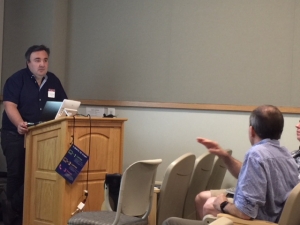Vincenzo Costanzo
Abstract

Mechanisms of replication fork protection
Maintenance of genome integrity during DNA replication relies on several factors that do not directly participate in DNA synthesis. Among these there are proteins that respond to DNA lesions and structures impairing replication fork progression. These factors are believed to be particularly important for the resolution of DNA damage occurring during DNA replication and the faithful duplication of chromosome regions with complex or repetitive DNA sequences. In my group, we combine the power of the Xenopus egg extract with advanced imaging techniques based on transmission electron microscopy (EM) to study major DNA metabolism processes linked to DNA replication and DNA repair. This approach allowed us to uncover for the first time a role for RAD51 in protecting replication forks, by preventing Mre11 mediated processing of nascent DNA (Hashimoto et al 2010, NSMB). These findings have been confirmed in mammalian cells by several other studies and linked to cancer cell survival and sensitivity to chemotherapy. More recently, we have shown that extensive nascent DNA degradation is triggered by the formation of reversed forks at stalled replication intermediates operated by SNF2 helicases (Kolinjivadi et al 2017, Mol Cell). These pathways are likely to play a major role in the presence of DNA damage and at complex DNA loci, including the centromeres, which we have shown to be enriched for DNA repair factors (Aze et al 2016, NCB). This work will be discussed in light of recent results obtained on replication fork protection mechanisms.
